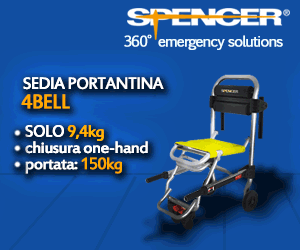Hover Box Element
Author of this article is Dr. Mario Rugna, MD.
Dr. Rugna is involved in the italian pre-hospital service in Firenze, Tuscany. He’s working in the HEMS service for Pegaso 1, the regional helicopter-based in Firenze.
More info on medest118.com
In 1901 Jokichi Takamine (1854-1922) isolated the pure form of adrenaline, also known as epinephrine. In 1893, George Oliver (1841– 1915), using his own instruments, studied the impact of glycerol extracts on arteries.
Routine use of adrenaline for cardiac arrest was first proposed in the 1960’s. Its inclusion within cardiac arrest management was based upon an understanding of the physiological role of adrenaline, and experimental data from animal research which showed that ROSC was more likely when the drug was used. It was not included on the basis of evidence of benefit in humans, but has remained, since today, a significant component of advanced life support despite minimal human data indicating beneficial effect .
Epinephrine (Adrenaline) in cardiac arrest: the glorious past, the (in)famous present and the possible future.
The (in)famous present

A recent review article “Adrenaline for out-of-hospital cardiac arrest resuscitation: A systematic review and meta-analysis of randomized controlled trials” published on Resuscitation in 2014, also concluded “There was no benefit of adrenaline in survival to discharge or neurological outcomes. There were improved rates of survival to admission and ROSC with SDA over placebo and HDA over SDA”.
Let’s review some physiology about aortic pressure and coronary perfusion.
- Coronary vessels are contained in epicardium and their flow is possible in the diastole when they are not compressed by myocardium during systolic contraction.
-

Coronary flow depends from the gradient between aortic diastolic (Ao) pressure and diastolic left ventricular (LV) pressure.

- Higher is the coronary pressure perfusion (CPP), greater is the chance of ROSC.

- The cut off value for ROSC is 15 mmHg of CPP, but more is better.
- Epinephrine is a key determinant factor in maintaining diastolic aortic pressure in cardiac arrest; thanks to its interaction with alpha receptors, located on the endothelium of the arteries, produce generalized peripheral arterial vasoconstriction maintaining aortic diastolic pressure to a high level even during chest compressions.
So why epinephrine doesn’t work and can be detrimental on long term outcome

I think there are two key factors, in the actual way to use Epinephrine,cwho determine its failure:
The wrong administration route
When epinephrine is administered intravenously in a low flow state patient (as is a patient during cardiac arrest, even if proper chest compressions are performed), the amount of drug that arrives to perform the “local” alpha effect on arteries is just a minimal quantity of the (high!!!) dose. The major part rely in the venous circulation and is mobilized in great quantity only when ROSC happens determining a widespread vasoconstriction and a consequent “overdose” effect (think just at the “stunned” myocardium that has to overwhelm such ha great post-load).
The wrong dose to the wrong patient
From the coronary perfusion pressure (CPP) point of view, every cardiac arrest patient is different: some patients have a (relative) good aortic pressure and a (relative) good coronary perfusione comparing to others.
When we administer the same amount of epinephrine to each of them this takes to an underdose in some patients (with low flow state) and an overdose in others (with good or high flow state).
The possible future

The right administration route
Probably the best route to administer epinephrine is not the vein but the artery.
It allows, even in a low flow state patient, a better chance to reach the vasoconstrictor effect maintaining a good aortic diastolic pressure and a consequent good coronary flow.
Nowdays (the era of REBOA, open thoracotomy and more) the chance to use ultrasound make this skill easier than before and definitively possible even in prehospital settings.
The right dose to the right patient
Giving epinephrine (standard dose) to a patient who has a low flow state (patients who need it more) make epinephrine usefulness (underdose) because just a little part of it circulate.
Giving epinephrine to patients in a good or high flow state (patients that need it less or don’t need epi at all) is detrimental and can cause overdose effect.
We need to know wich is the circulatory state of the patients to administer the right dose avoiding the “overdose” effect.
The only way to do this is monitoring aortic diastolic pressure through an arterial catheter. We can target Epinephrine dosage to reach a good aortic pressure maintaining a good CPP (achieving ROSC) and avoiding overdose.
Take home points for future improvement.
-
Train to reach an US guided arterial line in cardiac arrest
-
Check aortic pressure via peripheral or central (femoral) arterial line
-
Give Adrenaline intrarterially
-
Target Adrenaline doses to maintain a good aortic pressure
Tanks to Jim Manning who inspired this post with his talk Rethinking Adrenaline in Cardiac Arrest
References
- 1900: The discovery of epinephrine (adrenaline)
- Hagihara A, Hasegawa M, et al. Prehospital epinephrine use and survival among patients with out-of-hospital cardiac arrest. JAMA, March 21, 2012—Vol 307, No. 11
- Clifton W. Callaway, MD, PhD. Questioning the Use of Epinephrine to Treat Cardiac Arrest. JAMA, March 21, 2012—Vol 307, No. 11
- Lin S, et al. Adrenaline for out-of-hospital cardiac arrest resuscitation: A systematic review and meta-analysis of randomized controlled trials. Resuscitation (2014).
-
Rethinking Adrenaline in Cardiac Arrest- Jim Manning on Vimeo from SMACC Dub
- Manning JE, Murphy CA Jr. Aortic arch versus central venous epinephrine during CPR. Ann Emerg Med. 1993 Apr;22(4):703-8.


